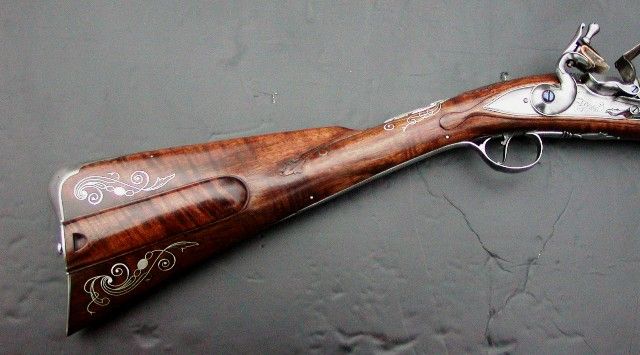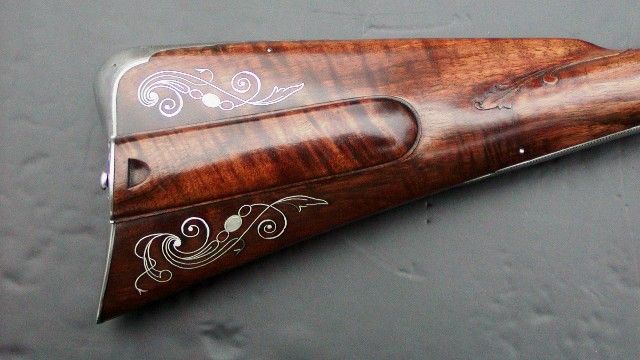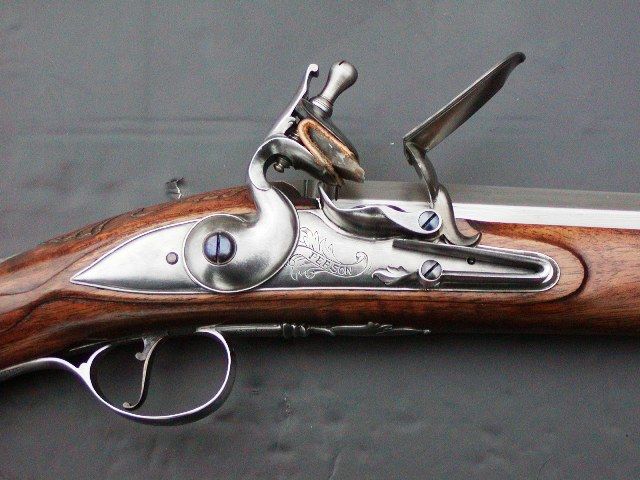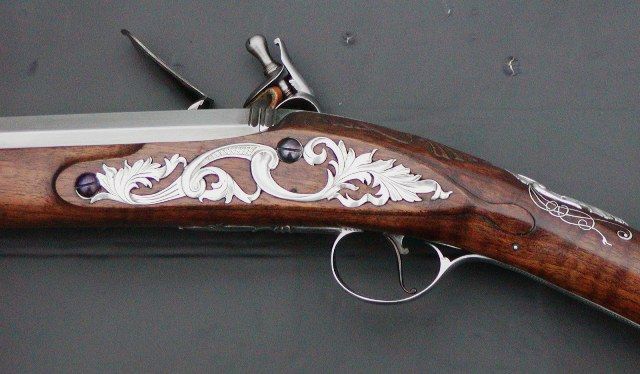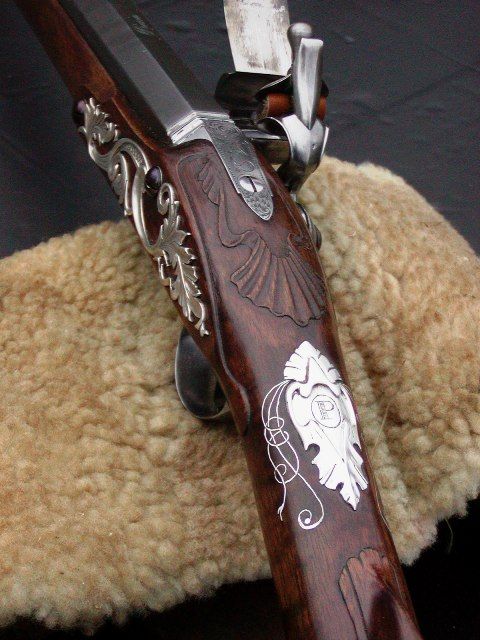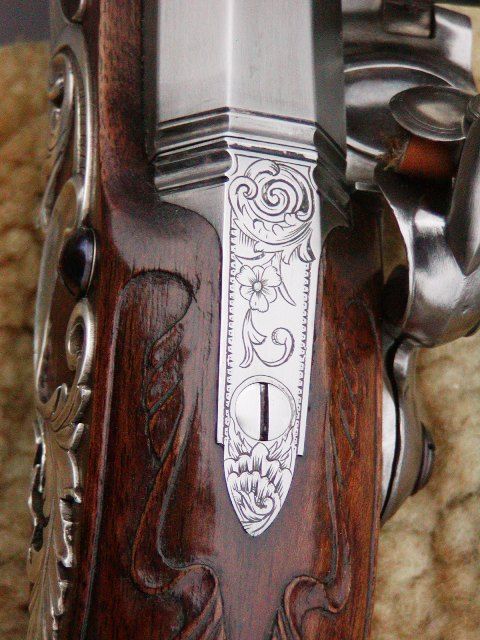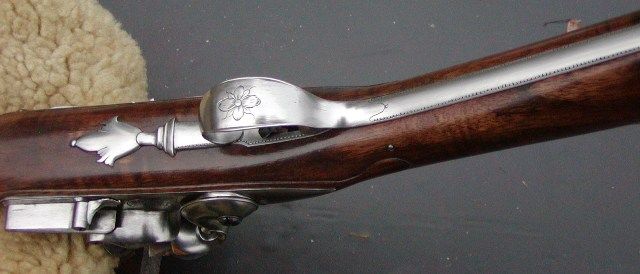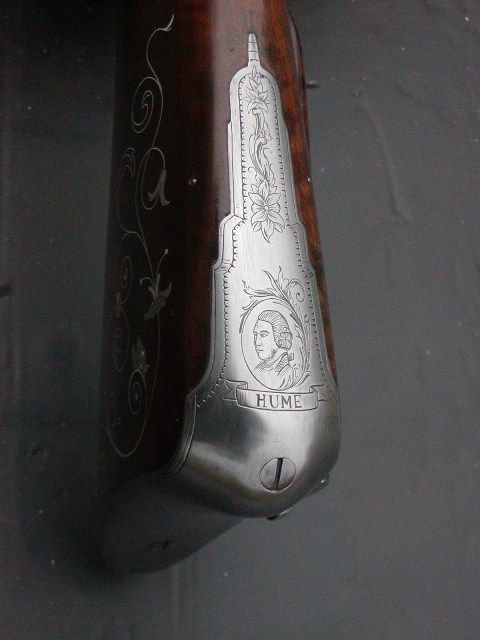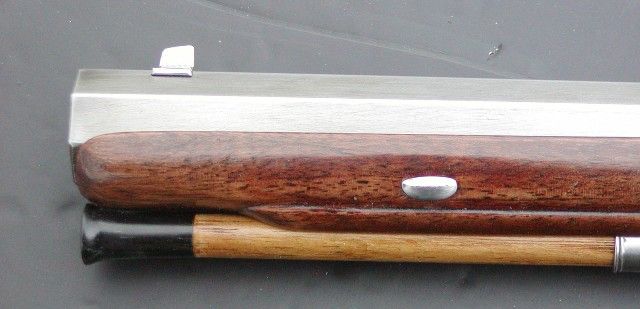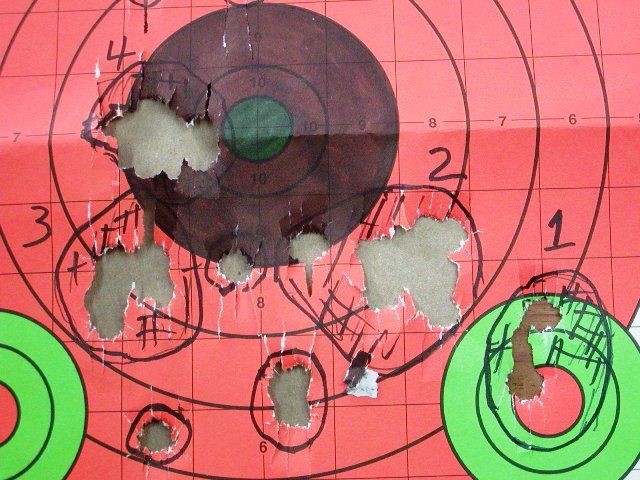Dave,
I thought I saw some "Turvey Influence" in your rifle and that's why I posted it.
I am not sure if Turvey and other English Rifles were indeed more accurate than locally made rifles or not in that period. I have not been able to track down where that information came from or if it was just the opinion of the author of that piece I posted. I would not be surprised if Turvey Rifles were generally of higher quality than provincial rifles as to fit, finish, carving, decoration, etc.; but that does not automatically make them more accurate.
Prior to his untimely death and while he was still the Master of the Gun Shop in Colonial Williamsburg, I asked Gary Brumfield what an FIW period Virginia Rifle would have looked like. The problem as he explained it in the 1980’s was there was no known examples extant of any such rifle. (I was also looking to see if possibly anyone was making rifles that early around Fredericksburg, Va where I lived for many years, but none were made around there that early.) Gary’s answer was much the same as he would later write below:
“What did a rifle made in Virginia prior to 1750 look like?
The question about what a pre-1750 longrifle might look like goes WAY beyond Virginia. Documented American rifles made anywhere before 1760 are scarce and, if you toss out the ones with questionable documentation, signatures, or origin, they come down basically to a few parts found in archaeological sites, also sometimes of questionable, European or American, origin. Based on documents, we know that both short rifles and long rifles existed in the colonies prior to the 1740s but nailing down a few surviving examples would be a wonderful breakthrough in research.”
http://www.flintriflesmith.com/WritingandResearch/WebArticles/VirginiaRifle.htm
During that same visit to the CW Gun Shop in the 1980’s, Gary showed me a reproduction of a rifle with a 36 inch barrel and English styling that could have been from that period and more common to the Tidewater through the Piedmont areas of Virginia. I have been wracking my brain to remember the name of the original gunsmith from whose work it was copied and all I can remember was it started with a “B.” Though it was a wonderful “feeling” rifle when I put it to my shoulder, I foolishly didn’t “log it” in my memory as well as I later wished I would have done. I had already gone through Kindig’s book, owned by my best friend in life in the mid 70’s, and this did not look much of anything I pictured an American or Virginia rifle would have looked like.
Gary also explained the “German or German Influenced Rifles” (of which I then thought more likely) were being made in the Shenandoah Rifle in that period, though some rifles also came down from other parts of Pennsylvania.
The next time I go to Colonial Williamsburg, I plan on asking a LOT more questions on rifles of the 1740’s/50’s. I have a standing invitation to get a private tour of the gun collection and much of that will be looking at Early Brown Bess’s in their collection, but also some on the rifles.
Gus

